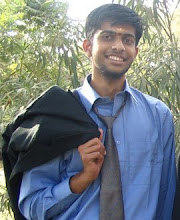Authors:
Manu Kumar
Andreas Paepcke
Terry Winograd
Summary:
Gaze technology problems -
accuracy, eye jitter detection, distinguishing between intentional dwelling and movements to involuntary search/ scan movements ( midas touch problem).
prior work - gaze based hot spots, gaze based context awareness, dwell time activation,...
current solution for pointing and selection - look, press, look, release
- look at the point of interest for pointing to rough area
- press a hot key (click, right click, double click )
- magnified image of the rough area appears
- with the hot key pressed down, look into the magnified area to select the particular area of interest
- release the hot key to make the selection
- to escape the process, press esc or stare away from the magnified area and release the hot key
User Study:
From the pilot study, the gaze data was found to be noisy. It was difficult to distinguish whether the user was looking at the target as a whole or focusing at a point. Focus points were included in the magnified view to improve the accuracy of the system. A gaze marker was included as a visual feedback for the user. But it proved to be a distraction in the pilot study.
20 users who were not used to eye tracker technology were involved. Three variations of the study are Eyepoint with and without focus grids and Eyepoint with gaze marker. Both qualitative and quantitative data was collected. Tasks in the user study were a real world browsing, a synthetic pointing and a mixed typing and pointing task. The users were first calibrated on the eye tracker and had 5-10 minutes training.
Web study - A single link was enabled on a page and all other links were disabled. The users were instructed to click the enabled link which was highlighted in orange. The time between the introduction of the page and the link selection was measured. The error rate for eyepoint was larger than that for the mouse. The users felt mouse was accurate but they (3/4 of users) were inclined to using eyepoint. Users felt focus points were useful.
Balloon study - A balloon with different sizes (22,30,40) are placed on the screen and amount of time taken to click is determined. The error rate and time were significantly affected by the size of the balloon. The eyepoint was slower than mouse by 100ms. 3/4 of the users felt inclined to use eyepoint. Subjects also felt fatigued by using mouse.
Mixed study - Mixed typing and pointing task included selecting a constant size balloon shown on the screen and then typing the shown word in the text box. This allowed the researchers to measure the time taken to move the hand from mouse to keyboard and then back to mouse for next selection. Eye point had better performance but lacked accuracy .
The error rate was more in case of eye point than mouse due to various reasons.
- dependence on individual, calibration and posture of the subject
- some subject errors like pressing the hot key before looking at balloon.
- seeing the target using peripheral vision before getting fixated on the fovial vision.
- astigmatism , squint, glasses that reduces the accuracy eye tracker.
Discussion:
I liked the user study. They have given significance to both qualititative and quantitative data. In case of the qualitative data collected, it was reported that the user liked to use eye point. The fatigue i think is not emphasized. I feel though selection by gaze tracking is natural, concentrating on an area is a very tiring work. Interesting to see users have gone through one hour of the user study. I could not use the eye tracker for more than 10 minutes in the lab.
Comments:
Drew ,
Murat

